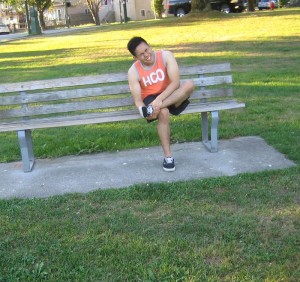Pinched nerve in the ankle is a condition due to repeated pressure and damages on the posterior tibial nerve. The tibial nerve spreads through the tarsal tunnel, which is a passageway inside the ankle and is composed of soft tissue and bone. Damage on the tibial nerve happens caused by compression due to consistent pressure.
Causes of pinched nerve in the ankle
- An abnormal growth such as development of lump in the joint of ganglion cysts; swollen varicose veins and bone spur
- Swelling caused by an injury such as sprained ankle or on nearby tendon
- Systemic disease such as low thyroid function, diabetes and arthritis
Symptoms
- Numbness and tingling in the foot and toes
- Pain in the ankle is severe at night, and there is difficulty sleeping.
- Walking difficulties and becomes susceptible to leg injury.
- Severe and aching pain or burning type
- Pain in the ankle can spread down towards the foot, toes and heel.
- The ankle joints becomes weakened, unable to walk properly and difficulty standing for a long time due to pain.
Pain in the ankle is severe at night, and there is difficulty sleeping.
Treatment
- Take plenty of rest especially the affected ankle. Avoid performing activities that result to pain in the ankle.
- Apply ice on the area in the form of an ice compress or ice pack. Apply ice compress on the area for at least 10-15 minutes to lessen the pain and the inflammation.
- Soak the foot in warm water to lessen the spasms and the stiffness of the area. It will also lessen the pain.
- Wrap the affected area using an Ace bandage to lessen the inflammation and the pain. Avoid wrapping it too tight to prevent problems with blood circulation in the area. If the skin under the wrap becomes blue or violet, loosen the wrap.
- Keep area elevated above the level of the heart to lessen the swelling and the pain. If lying down raise the feet in couple of pillows to keep it elevated.
- Take the prescribed over-the-counter medications that include nonsteroidal anti-inflammatory medication to lessen the pain and the inflammation.
- Take the prescribed steroid injections to lessen the swelling and the pain.
- Use the prescribed braces and splints to prevent unnecessary movements and prevent compression of the nerve. It also provides proper support and stability of the area while walking.
- Wear custom made shoes with proper support for the arches of the feet to lessen the pain.

